Text
Phthalic Anhydride (PA)
Phthalic Anhydride (PA)
Phthalic anhydride is an organic compound, C8H4O3, which is a circular anhydride formed by the dehydration of phthalic acid molecules. Phthalic anhydride is a white solid, it is an important raw material in the chemical industry, especially used in plasticizer manufacture. HS code for PA is 2917350000.
Features of Phthalic Anhydride (PA)
l Hypotoxic
l The danger of combustion in case of high heat, open flame, or contact with an oxidizer
l The eighth category of dangerous goods
Specifications of Phthalic Anhydride (PA)
Phthalic Anhydride Cas No.
85-44-9
Density At
1.53 g/cm³
Formula
C8H4O3
Boiling Point
284℃
Melting Point
130.8℃
Storage and Delivery of Phthalic Anhydride (PA)
For the package, PA is available in 25kg/bag, 500kg/bag.
FAQs of Phthalic Anhydride (PA)
Q.
What is phthalic anhydride used for?
A.
It is widely used in the production of plasticizers and pigments. It can also be used as a scorch retarder, light stabilizer and heat stabilizer.
Q.
Is phthalic anhydride dangerous?
A.
If exposed to phthalic anhydride, it may cause acute irritation to personnel, including irritation to eyes, respiratory tract and skin, but no permanent damage has been observed.
https://www.douwin-chem.com/products/phthalic-anhydride-pa/
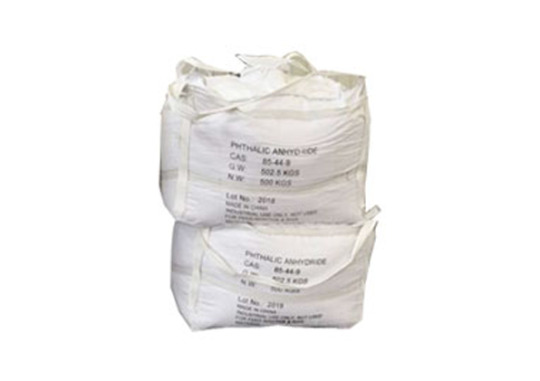
0 notes
Text
Methyl Methacrylate (MMA)
Methyl Methacrylate (MMA)
Methyl methacrylate, whose chemical formula is C5H8O2 and chemical formula quantity is 100.12, is an organic compound, also known as MMA, or methyl ester for short. HS code for MMA is 2916140010. It is an important chemical raw material and the production of transparent plastic polymethyl methacrylate (PMMA) monomer. It is flammable with a strong pungent smell and is moderately toxic. Long-term exposure should be avoided.
Features of Methyl methacrylate (MMA)
MMA is a colorless volatile liquid and has strong spicy, flammable. Solubility: soluble in ethanol, ethyl ether, acetone, and other organic solvents, slightly soluble in ethylene glycol and water. Flammable, stable, easy to polymerize in the presence of light, heat, ionizing radiation, and catalysts. It can explode when mixed with air. It is flammable when exposed to open fire, high temperature, and oxidant. Combustion stimulates smoke, chemical reaction with oxidants, acids, not long storage, to prevent polymerization.
Specification of Methyl methacrylate (MMA)
Methyl Methacrylate Cas No.
80-62-6
Density
0.944 g/cm3
Formula
C5H8O2
IUPAC NAME
MMA/methyl ester
Boiling Point
100 ℃
Melting Point
-48 ℃
Storage and Delivery of MMA
For the package, MMA is available in drum and iso tank. The drum contains 190kg, and the container load for 20FCL is 15.2tons. The iso tank contains 22MT.
FAQs of Methyl Methacrylate (MMA)
Q.
Is methyl methacrylate toxic?
A.
The acute toxicity of methyl methacrylate is low, but repeated inhalation can still cause irritation to the nasal cavity. Higher concentrations of methyl methacrylate can also affect the kidneys and liver.
Q.
Is methyl methacrylate safe in cosmetics?
A.
It is considered safe and rated as a low-hazard ingredient by the cosmetic database.
https://www.douwin-chem.com/products/methyl-methacrylate-mma/
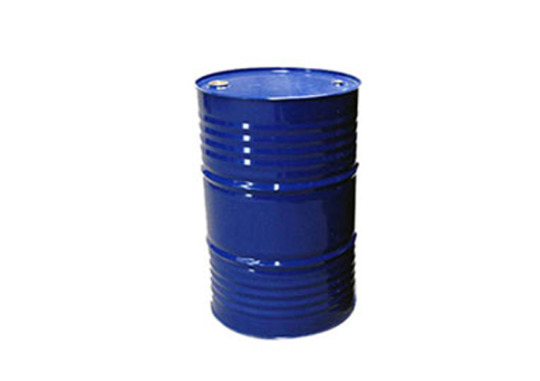
0 notes
Text
Methyl Ethyl Ketone (MEK)
Methyl Ethyl Ketone (MEK)
MEK is a clear colorless volatile liquid with a pleasant pungent odor (Other Names MEK, Butanone, 2-butanone, Methyl acetone). HS code for MEK is 29141200. Widely used in applications of coating, adhesives, PU coating, MEKO, printing inks, washing solvent, artificial leather, pesticide intermediate.
Features of Methyl Ethyl Ketone (MEK)
MEK is precursor chemicals in Category III. The specification of acidity is less than or equal to 0.003, color is less than or equal to 10, density is 0.804-0.806, distillation range 78.5-81.0, the non-volatile matter is less than or equal to 5, moisture is less than or equal to 0.05, purity is greater than or equal to 99.7.
Specifications of Methyl Ethyl Ketone (MEK/Butanone)
methyl ethyl ketone Cas No.
78-93-3
Density At 20d.C.(G/Cm3)
0.804-0.806
Chemical Structural Formula
C4H80
lupus Name
butan-2-one
Boiling Point
79.6℃
Melting Point
-86℃
Storage and Delivery of Methyl Ethyl Ketone for Sale
MEK is available in the drum, iso tank, and bulk. It can be rationed to fill the drum. Normally the container loaded for 20GP is 13.2 tons, 40GP is 23.1 tons.
FAQs of Methyl Ethyl Ketone (MEK)
Q.
What is methyl ethyl ketone used for?
A.
Regarding the butanone uses, MEK is used in surface coatings, adhesives, printing inks, chemical intermediates, tapes, and lubricant dewaxing agents. MEK is also used as an extraction medium for fats, oils, waxes, and resins. It can be used as an efficient general-purpose solvent for surface coating.
Q.
How dangerous is MEK?
A.
It is a dangerous chemical, and direct contact can cause certain harm to the human body, such as coughing, dizziness, headache, nausea, blurred vision, and may cause people to pass out.
Q.
Will MEK remove paint?
A.
MEK can remove paint, and it evaporates very fast and will not cause rust.
https://www.douwin-chem.com/products/methyl-ethyl-ketone-mek/
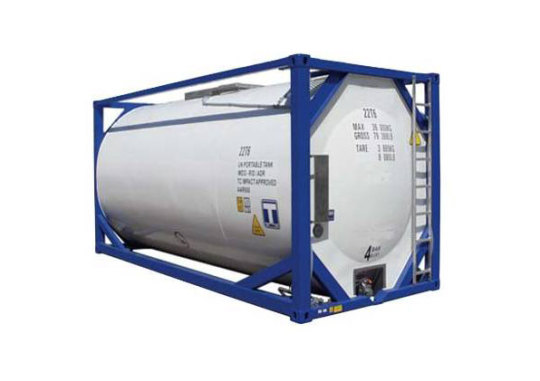
0 notes
Text
Methyl Acrylate (MA)
Methyl Acrylate (MA)
Methyl acrylate is a kind of organic compound, the molecular formula is C4H6O2, colorless transparent liquid, has a pungent smell. HS code for Methyl Acrylate is 2916121000. Slightly soluble in water, soluble in ethanol, ether, acetone, benzene.
Features of Methyl Acrylate (MA)
1. Methyl acrylate does not polymerize when the temperature is lower than 10℃, while higher than 10℃ tends to polymerize. Light, heat, peroxide, and so on accelerate polymerization.
2. Methyl acrylate is moderately toxic and has strong irritating and corrosive effects on eyes, skin, and mucosa, and can be absorbed through the skin to cause poisoning.
3. Stability.
4. Banned substances: acids, bases, strong oxidants.
5. Conditions to avoid contact: exposure to heat and air.
6. Polymerization hazard: Polymerization.
Specification of Methyl Acrylate (MA)
Methyl Acrylate Cas No.
96-33-3
Density
0.95 g/cm³
Formula
C4H6O2
Boiling Point
80.5℃
Melting Point
-76.5℃
Storage and Delivery of Methyl Acrylate (MA)
For the package, methyl acrylate is available in drum and isotank. The drum contains 180kg, and the container load for 20FCL is 14.4tons. The isotank contains 21MT.
FAQs of Methyl Acrylate (MA)
Q.
What is methyl acrylate used for?
A.
Methyl acrylate can be used to make polymers, and then into leather coatings, resins, textile and paper coatings and plastic films.
Q.
How to make methyl acrylate?
A.
Methyl acrylate can be obtained by debromination.
https://www.douwin-chem.com/products/methyl-acrylate-ma/

0 notes
Text
Maleic Anhydride (MA)
Maleic Anhydride (MA)
Maleic anhydride often abbreviated as MA, is an organic compound. It is a colorless crystal, strong stimulating smell, and easy to sublimate. HS code is 29171400. It is mainly obtained from the oxidation of n-butane or butene in benzene or carbon four fractions and is a raw material for the production of unsaturated polyester and organic synthesis.
Features of Maleic Anhydride (MA)
It should avoid contact with moist air, a strong oxidizer, strong reducing agent, strong acid, strong base, alkali metal, and water. The rhombic system is a colorless acicular or lamellar crystal. It dissolves in ethanol and produces esters. Soluble in ethanol, ether, and other organic solvents, difficult to dissolve in petroleum ether and carbon tetrachloride. It reacts with hot water to form maleic acid. It is easy to copolymerize olefins. Homopolymerization is also possible. It reacts with a diol to form linear unsaturated polyester and with sulfur trioxide to form sulfonated maleic anhydride.
Specification of Maleic Anhydride (MA)
Maleic Anhydride Cas No.
108-31-6
Density
1.484g/mL,60℃
Formula
C4H2O3
IUPAC NAME
cis-butenedioic anhydride
Boiling Point
202.2℃
Melting Point
52.8℃
Storage and Delivery of Maleic Anhydride (MA)
For the package, Maleic Anhydride is available in bag and container. The bag contains 25kg, and the container load for 20FCL is 20 tons with pallets and 25 tons without pallets.
FAQs of Maleic Anhydride (MA)
Q.
What is maleic anhydride used for?
A.
Maleic anhydride can be used in the production of unsaturated polyester resins, as well as in the production of coatings, drugs, agricultural products, and surfactants.
Q.
Is maleic anhydride toxic?
A.
Studies have found that acute inhalation of maleic anhydride can cause respiratory irritation and eye irritation. However, it has not been classified as a carcinogen.
https://www.douwin-chem.com/products/maleic-anhydride-ma/
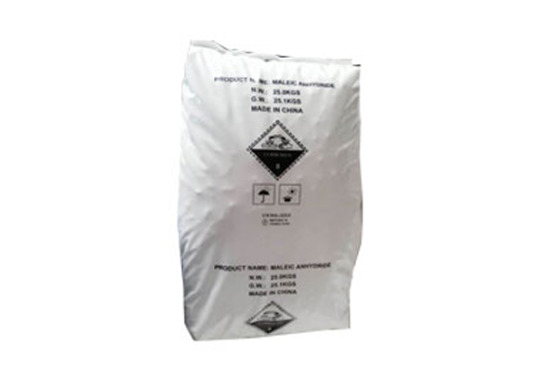
0 notes
Text
Butyl Acrylate (BA)
Butyl Acrylate (BA)
Butyl acrylate is a kind of colorless transparent liquid, insoluble in water, can be mixed in ethanol and ether. HS code for BA is 2916123000. Acrylates and their esters have been widely used in industry. They are used to make soft monomers of acrylate solvent and emulsion adhesives, which can be homopolymer, copolymerization and graft copolymerization, as well as high polymer monomers, used as intermediates in organic synthesis.
Features of Butyl Acrylate (BA)
With the increase of temperature and the extension of storage time, the tendency of self-aggregation is intensified. It should be avoided to exposure to light and heat.
Specification of Butyl Acrylate (BA)
Butyl Acrylate Cas No.
141-32-2
Density
0.89kg/m³
Formula
C7H12O2
IUPAC NAME
2-butyl acrylate
Boiling Point
145.7℃
Melting Point
-64.6℃
Storage and Delivery of Butyl Acrylate (BA)
For the package, Butyl Acrylate is available in drum and iso tank. The drum contains 180kg, and the iso tank contains 21MT.
https://www.douwin-chem.com/products/butyl-acrylate-ba/

0 notes
Text
Adipic Acid (AA)
Adipic Acid (AA)
Adipic acid, also known as fatty acid, is an important organic diacid with the molecular formula C6H10O4. HS code for Adipic Acid is 29171200. Widely used in applications of sole raw liquor, PU coating, TPU, nylon 66, plasticizer, adhesives, and so on.
Features of Adipic Acid (AA)
Adipic acid is a general chemical. It's a white powder. It has the smell of burning bones. It is easily soluble in most organic solvents such as alcohol and ether.
Specification of Adipic Acid (AA)
Adipic Acid Cas No.
124-04-9
Density At
1.36 g/cm³
Formula
C6H10O4
IUPAC NAME
fatty acid
Boiling Point
330.5℃
Melting Point
152℃
Storage and Delivery of Adipic Acid
For the package, AA is available in 25kg/bag, 500kg/bag and 1000kg/bag.
FAQs of Adipic Acid (AA)
Q.
What happens when adipic acid is heated?
A.
There are two kinds: 1. HOOC-(CH2)4-COOH first removes a water molecule to form hexanedioic anhydride: C6H10O4==heating==C6H8O3+H2O. 2. Further heating decomposition to cyclopentanone, carbon dioxide, water: C6H10O4==heating==C5H8O+CO2+H2O
Q.
What is the use of adipic acid?
A.
The material has a protein-like structure and can be further processed into fibers, so 90% of it is used for nylon production. Adipic acid can also be used as a plasticizer and lubricant.
Q.
How adipic acid is formed?
A.
It is said that an authoritative report says that adipic acid can be produced by oxidizing cyclohexane.
Q.
Does adipic acid dissolve in water?
A.
Solubility of adipic acid: slightly soluble in water, slightly soluble in ether, soluble in ethanol
https://www.douwin-chem.com/products/adipic-acid-aa/
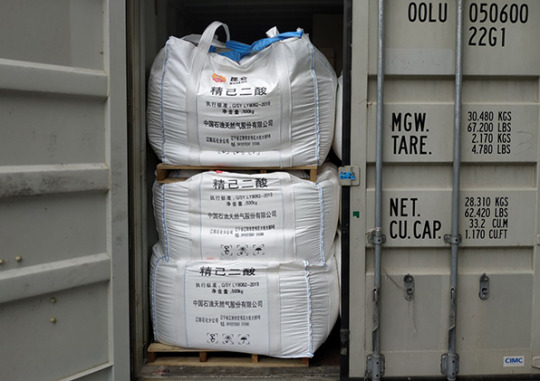
0 notes
Text
Acrylic Acid (AA)
Acrylic Acid (AA)
Acrylic acid is an organic compound . HS code for Acrylic Acid is 2916110000. It is the simplest unsaturated carboxylic acid, consisting of a vinyl group connected directly to a carboxylic acid terminus. This colorless liquid has a characteristic acrid smell. Used as a monomer in the production of acrylic resins, forms acrylate esters by combination with alcohols. It is miscible with water, alcohols, ethers, and chloroform.
Features of Acrylic Acid (AA)
It has a low melting point, liquid at normal temperature, for crystallization when the temperature is below 13℃, may polymerize under prolonged exposure to high temperature.
Specification of Acrylic Acid (AA)
Acrylic Acid Cas No.
79-10-7
Density
1.05 g/cm3 (20 °C)
Formula
CH2=CHCOOH
IUPAC NAME
propenoic acid
Boiling Point
141℃
Melting Point
13℃
Storage and Delivery of Acrylic Acid (AA)
For the package, Acrylic Acid is available in drum and isotank. The drum contains 200kg, and the container load for 20FCL is 16tons with pallets. The isotank contains 24MT.
https://www.douwin-chem.com/products/acrylic-acid-aa/
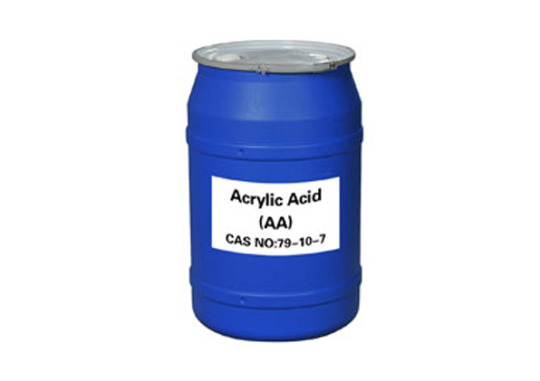
0 notes
Text
Acrylamide (AM)
Acrylamide (AM)
Acrylamide is a colorless transparent sheet crystal, odorless, toxic. Soluble in water, ethanol, slightly soluble in benzene, toluene. HS code for Acrylamide is 2924199040. It is easy to sublimate and polymerization.
Features of Acrylamide (AM)
Acrylamide is a hard glassy solid at room temperature. The product has the glue liquid, the latex, and the white powder grain, the translucent bead grain and the thin section, and so on. It has high thermal stability. It can dissolve in water in any proportion, and the aqueous solution is a uniform and transparent liquid. After long-term storage, the solution viscosity will decrease due to the slow degradation of the polymer, especially when the storage and transportation conditions are poor.
Specification of Acrylamide (AM)
Acrylamide Cas No.
79-06-1
Density
1.322 g/cm³
Formula
C3H5NO
Boiling Point
82 ℃
Melting Point
125.00 ℃
Storage and Delivery of Acrylamide (AA)
For the package, Acrylamide is available in bag and container. The bag contains 25kg, and the container load for 20FCL is 12-13 tons with pallets. For 20FCL is 16 tons without pallets."
https://www.douwin-chem.com/products/acrylamide-am/
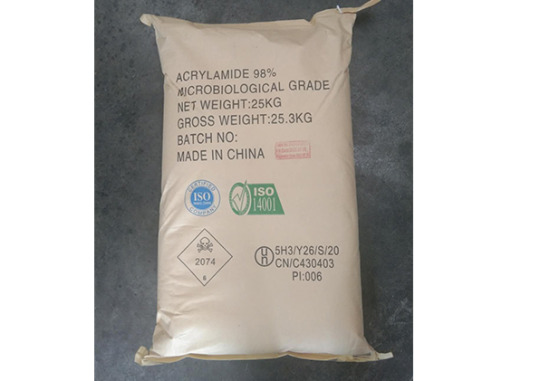
0 notes
Text
Products
DOUWIN ORGANIC CHEMICAL COMPOUNDS SUPPLIER
Established in 2006, Shanghai Douwin Chemical is your trustworthy partner. DOUWIN can ensure competitive prices and high quality of goods. We are specialized in Methyl Ethyl Ketone, Adipic Acid, Maleic Anhydride, Phthalic Anhydride, Acrylic Esters, Methyl Methacrylate, Acrylamide, and other chemical products.
Types Of Chemical Compounds List
Methyl Ethyl Ketone (MEK)
CAS No.: 78-93-3
HS code: 29141200
Appearance: Colorless Transparent liquid
Application: Coating/Adhesive/PU coating/MEKO/Ink
Adipic Acid (AA)
CAS No.: 124-04-9
HS code: 29171200
Appearance: White crystalline
Application: PU coating/ Footwear PU/ Nylon 66/ TPU/ Adhesives / Plasticizer
Maleic Anhydride (MA)
CAS No.: 108-31-6
HS code: 29171400
Appearance: Colorless crystal
Application: UPR / Hydrolytic Polymerizd Maleic Anhydride / Food additive / Pesticide Intermediate
Phthalic Anhydride (PA)
CAS No.: 85-44-9
HS code: 29173500
Appearance: White solid
Application: Plasticizers(DOP / DBP)/ UPR/ Alkyd resin/ Anthraquinone
Butyl Acrylate (BA)
CAS No.: 141-32-2
HS code: 29161230
Appearance: Colorless transparent liquid
Application: Adhesive / Resin / Emulsion / Leveling agent
Methyl Acrylate (MA)
CAS No.: 96-33-3
HS code: 2916121000
Appearance: Colorless transparent liquid
Application: Adhesive / Coating / Textile Sizing Agent
Acrylic Acid (AA)
CAS No.: 79-10-7
HS code: 29161100
Appearance: Colorless liquid
Application: Thickener/ Water reducing agents / Water treatment agents / Hydroxypropyl Acrylate/ Hydroxyethyl acrylate
Methyl Methacrylate (MMA)
CAS No.: 80-62-6
HS code: 2916140010
Appearance: Colorless volatile liquid
Application: Coating/ PMMA Polymethyl Methacrylate/ Emulsified polymer
Acrylamide (AM)
CAS No.: 79-06-1
HS code: 2924199040
Appearance: Colorless transparent sheet crystal
Application: Textile auxiliaries / Oilfield auxiliary chemical / Printing and dyeing auxiliary / Polymethyl methacrylate
Advantages of Dowin Organic Chemical Compounds
l DOUWIN can ensure competitive price and good quality of goods.
l We help upstream partners to improve the operating rate and expand market share.
l We help downstream customers do a good job in raw material procurement to save time, effort and money, so as to enhance their competitiveness in the industry.
l Our sincere service is the real service.
https://www.douwin-chem.com/products/
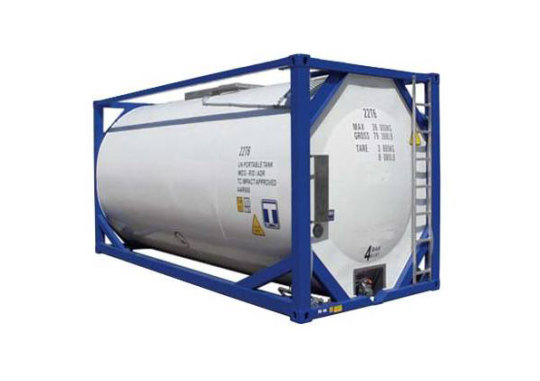
0 notes
Text
Acrylamide (AM)
https://www.douwin-chem.com/products/acrylamide-am/
Acrylamide is a colorless transparent sheet crystal, odorless, toxic. Soluble in water, ethanol, slightly soluble in benzene, toluene. HS code for Acrylamide is 2924199040. It is easy to sublimate and polymerization.
Features of Acrylamide (AM)
Acrylamide is a hard glassy solid at room temperature. The product has the glue liquid, the latex, and the white powder grain, the translucent bead grain and the thin section, and so on. It has high thermal stability. It can dissolve in water in any proportion, and the aqueous solution is a uniform and transparent liquid. After long-term storage, the solution viscosity will decrease due to the slow degradation of the polymer, especially when the storage and transportation conditions are poor.
Specification of Acrylamide (AM)
Acrylamide Cas No.
79-06-1
Density
1.322 g/cm³
Formula
C3H5NO
Boiling Point
82 ℃
Melting Point
125.00 ℃
Storage and Delivery of Acrylamide (AA)
For the package, Acrylamide is available in bag and container. The bag contains 25kg, and the container load for 20FCL is 12-13 tons with pallets. For 20FCL is 16 tons without pallets."

0 notes
Text
Types Of Chemical Compounds List
https://www.douwin-chem.com/products/
DOUWIN ORGANIC CHEMICAL COMPOUNDS SUPPLIER
Established in 2006, Shanghai Douwin Chemical is your trustworthy partner. DOUWIN can ensure competitive prices and high quality of goods. We are specialized in Methyl Ethyl Ketone, Adipic Acid, Maleic Anhydride, Phthalic Anhydride, Acrylic Esters, Methyl Methacrylate, Acrylamide, and other chemical products.
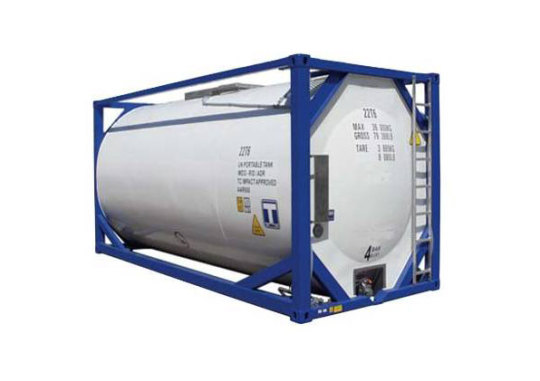
0 notes
Text
Phthalic Anhydride (PA) Applications
https://www.douwin-chem.com/pa-phthalic-anhydride-applications/
DBP Plasticizers
Dibutyl phthalate is the most commonly used plasticizer for PVC, which can make the products have good softness. Specifications of DBP PlasticizersDibutyl phthalate is an excellent plasticizer for nit...
DOP Plasticizers
Dioctyl phthalate (DOP), an organic ester compound, is a commonly used plasticizer. Specifications of dopDOP are the most widely used plasticizer in the industry.
Unsaturated Polyester Resins
Unsaturated polyester resin refers to the polycondensation reaction of diacids and diols to form a polymer containing unsaturated double bonds.
Alkyd Resin
Alkyd resin is an oil-modified polyester resin made by condensation polymerization of polyols, phthalic anhydride and fatty acids or oils (triglycerides).
Anthraquinone
Anthraquinone is a synthetic natural dye.

0 notes
Text
Methyl Methacrylate (MMA) Applications
https://www.douwin-chem.com/methyl-methacrylate-applications/
Coating(MMA Application)
The coating is coated in the surface of the object being protected or decorated and can form a firm adhesion of continuous film with the coated object.
Polymethyl Methacrylate(PMAA)
Polymethyl Methacrylate is a colloquial name for PMMA. The chemical name of this transparent polymer material is polymethyl methacrylate, which is a polymer of methyl methacrylate.
Emulsified Polymers
Emulsified polymers are prepared by adding surfactant to an insoluble polymer solution. Emulsions of this polymer are produced by high speed stirring.

0 notes
Text
Methyl Ethyl Ketone (MEK) Applications
https://www.douwin-chem.com/mek-methyl-ethyl-ketone-2-butanone-applications/
Coating
The coating is coated in the surface of the object being protected or decorated, and can form a firm adhesion of continuous film with the coated object, is usually based on resin, or oil, or emulsion, add or do not add pigment, filler, add the corresponding additives, with organic solvent or water prepared from the viscous liquid.
Specifications of Coating
Coating belongs to the organic chemical polymer material, and a coating film formed belongs to the polymer compound type. The coating has the characteristics of covering power, film adhesion, viscosity, fineness, as well as pollution resistance, durability, alkali resistance, and the lowest film-forming temperature.
How is methyl ethyl ketone applied to coating?
The coating is made up of synthetic resin, MEK, filling, and auxiliaries. The coating is composed of synthetic resin, MEK, filling, and auxiliaries, in which synthetic resin accounts for 65%, MEK accounts for 27%, filling accounts for 4%, and auxiliaries account for 4%.
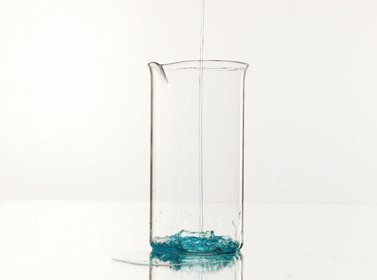
0 notes
Text
Maleic Anhydride (MA) Applications
https://www.douwin-chem.com/ma-maleic-anhydride-applications/
UPR
Unsaturated polyester resin refers to the polycondensation reaction of diacids and diols to form a polymer containing unsaturated double bonds.
Hydrolytic Polymerizd Maleic Anhydride
HPMA is a low molecular weight polyelectrolyte with a general relative molecular weight of 400~800, non-toxic, easily soluble in water, high chemical stability, and thermal stability.
Food Additive
A food additive is a synthetic or natural substance added to food for the purpose of improving the quality of color, aroma, and taste, as well as for the purpose of preservative and processing.
Pesticide Intermediate
Pesticide intermediate is produced by processing agricultural raw materials, and it is an intermediate medium that combines two or more substances together.
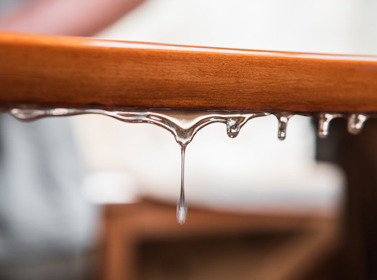
0 notes
Text
Adipic Acid (AA) Applications
https://www.douwin-chem.com/adipic-acid-applications/
PU Coating
Polyurethane coating is a kind of common coating, which can be divided into two-component polyurethane coating and one-component polyurethane coating.
Footwear PU
Polyurethane sole is made of polyurethane resin as the main material by adding various additives.
Nylon-66
Polyhexadiohexylenediamine, commonly known as nylon-66, is a thermoplastic resin, commonly made from polycondensation of adipic acid and hexadiamine.
TPU
TPU (Thermoplastic polyurethanes) name for Thermoplastic polyurethane elastomer rubber.
Adhesive
Adhesive is a substance that binds objects together by means of adhesion."Adhesive" is the general standard term for other types of glues, cement, pastes, ointments, etc.
Plasticizer
The plasticizer is widely used in the industrial production of polymer materials. Any substance added to a polymer material that increases the plasticity of the polymer is called a plasticizer. Plasticizers can improve the performance of polymer materials, reduce production costs and increase production benefits.

0 notes